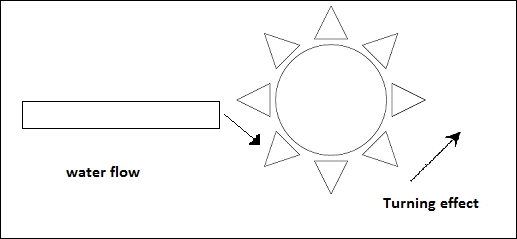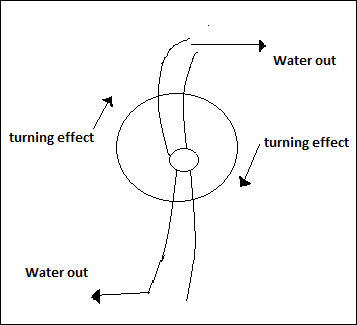
- Solar Energy - Introduction
- Solar Energy - Photovoltaic Effect
- Developing Solar Panel
- Solar Energy - Cell Efficiency
- Types of Photovoltaics
- Geothermal Energy
- Geothermal Energy - Introduction
- Geothermal Energy - Extraction
- Geothermal Energy - Geophysics
- Hydroelectric Power
- Hydroelectric Power - Introduction
- Hydroelectric Power - Turbine Types
- Hydroelectric Power Systems
- Hydraulic Ram Pump
- Renewable Energy Resources
- Renewable Energy - Quick Guide
- Renewable Energy - Resources
- Renewable Energy - Discussion
Hydroelectric Power - Turbine Types
There are two broad classifications of turbines namely Impulse turbines and Reaction turbines. The choice of turbines relies on the head and flow. Other factors to consider are depth, cost, and the efficiency required.
Impulse Turbines
In impulse turbines, the velocity of water hits the buckets of the turbine wheel to create mechanical energy. Water runs off the bottom of the turbine after turning the wheel.
In impulse turbines, the velocity of water hits the buckets in the turbine wheel to create mechanical energy. Water runs off the bottom of the turbine after turning the wheel.

Types of Impulse Turbines
Impulse turbines are of two types −
Pelton wheel − This type of wheel has jets that direct water into an aerated space. Water falls on the buckets of the runner and causes a turning moment. This wheel requires no draft tubes. A variation was developed called the turgo-wheel that looks like fan blades enclosed in the edges. Water simply runs through the fans and causes rotation. It is designed for high head and a low flow.
Cross-flow − the wheel has drum-like section with elongated nozzle and rectangular in shape. The opening guide vanes direct water to the runner. Water flows through the blades twice as it goes in and flows out.
Reaction Turbines
In Reaction turbines, power is developed from both pressure and the impact of moving water because the runner is located at the center of the stream. These are mostly suited for higher flow and lower head. Water hits all the blades rather than individual blade at a time.

Reaction turbines are of three types −
Propeller turbines have a runner with three to six blades. Water hits all the blades constantly at constant pressure to balance the runner. There are variations of propeller turbine, that is, bulb, Kaplan, tube and straflo.
Francis turbine uses a runner with nine or more fixed buckets. Water is allowed to flow just above the turbine to create a constant spinning motion.
Free-fall turbines utilize the kinetic energy in water and not the potential energy used by most turbines. That is why these are commonly known as kinetic turbines. They operate under natural setting of streams and rivers. They may also operate with ocean tides.